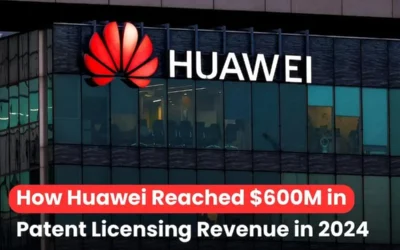
When it comes to getting real value out of your innovation, patent monetization is one of the smartest moves a business or investor can make. It’s all about using your patents not just for protection, but as a powerful source of revenue. But here’s the thing — the entire monetization journey starts with one critical step: patent valuation for startups. This step determines how much your patent is actually worth and whether it can attract deals, investors, or Patent licensing opportunities. Sounds simple, right? In reality, it’s a bit more complex. That’s why most companies and investors rely on experts to get it right. Keep reading to understand how patent valuation works and how it can shape the financial future of your innovation.
Why Does Patent Valuation Mean, and the Importance of Patent Valuation for Startups and Businesses?
Before learning how to do patent valuation — especially for startups — it’s important to first understand what it actually means and why it matters so much.
Patent valuation is basically the process of figuring out how much a patent is really worth — not just on paper, but in real business terms. Doing a proper valuation comes with big benefits, such as:
- It helps determine the financial value of an invention, technology, or idea that’s protected by a patent.
- For startups, companies, and even investors, this step is crucial because it turns innovation into a measurable asset.
- Knowing the true value of a patent helps in making smarter business decisions — whether that’s raising funds, selling or licensing the technology, or attracting new partners
For startups, though, patent valuation is even more important. At an early stage, most startups need funds to scale, grow, or even keep operations running. Monetizing patents can open new doors for revenue — but getting the valuation right is key. If you value your patent too highly, it might scare off potential investors or buyers. If you value it too low, you risk losing money.
Read Also: Best Ways to Find Patent Buyers and Licensees in 2025
How Can Startups and New Businesses Calculate Patent Valuation?
When it comes to Patent Valuation for Startups, there are a few simple steps to figure out how much your innovation is actually worth.
- First, start by identifying which patent or technology you want to value — it could be your main product, a standout feature, or even something you plan to develop later.
- Next, do a bit of market research to see how big your target market is, who your competitors are, and how similar technologies or patents are performing.
- Once you’ve got that picture, pick the right Patent valuation method — this could be based on future income potential, comparing similar market deals, or calculating how much it would cost to recreate your invention from scratch.
- Don’t forget to check the legal and technical strength of your patent, too — how broad the claims are.
- After that, think about the long-term value of your patent: can it help you make money, attract investors, or give you an edge over competitors?
- Since the process can get a bit technical, it’s smart to bring in IP valuation experts if needed — they can help make sure your numbers are accurate and realistic.
- And finally, keep your valuation updated! As markets and technologies evolve, your patent’s value will change too. Staying on top of it helps you always know what your innovation is truly worth.
Read Also: OPPO Grants Global 5G SEP License to Leading Chinese Carmaker
Conclusion
Patent valuation helps startups understand the real worth of their innovation and use it as a powerful business asset. By knowing the true value of their ideas, startups can make smarter decisions — from attracting investors to licensing their technology or planning future growth. Getting your patent valuation right isn’t just about numbers; it’s about unlocking the full potential of your innovation and turning creativity into real market value.









